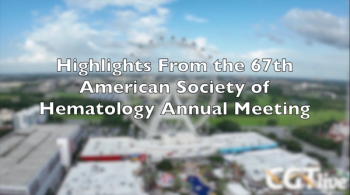
Replacement, Non-Factor, and Gene Therapies: A Look at Current Options for Hemophilia Treatment
A look at global access to gene therapy and an overview of the progress in hemophilia treatments.
This article was
Replacement therapy has been the standard of care for treating patients with hemophilia since the 1950s, but a recent paper explores other options available for patients with the congenital X-linked bleeding disorder.
In a
The Standard of Care: Replacement Therapy
By taking plasma-derived, or recombinant products, and using them to replace the missing clotting factor, hemostasis is restored and the adoption of prophylactic therapy is facilitated. The half-life of these treatments has also recently been extended, offering a longer duration of viability.
Despite the progress achieved with these bioengineered clotting factors, this treatment comes with challenges. Aside from the burden of financial costs, the procedure entails frequent intravenous injections and patients can still potentially develop inhibitors, essentially negating the purpose of the treatment.
Non-Factor Therapy
Non-replacement therapy can mitigate some of the hindrances of replacement therapy. This class of products was designed to go beyond the replacement strategy with the aim to attain hemostasis through the method of mimetic products, or inhibit the anticoagulant pathways and stabilize hemostasis.
Emicizumab is the first and only non-replacement agent licensed for prophylaxis. It can be a good candidate for children since it’s administered subcutaneously making it easier to adhere to treatment. This therapy is also more effective for patients with neutralizing anti-FVIII or anti-FIX antibodies, who experience frequent bleeding episodes.
Rebalancing Agents & Gene Therapy
Achieving lasting plasma factor levels with a one-time treatment has been an area of focus for decades, which also applies to the gene therapy clinical trials for hemophilia. The trials include intravenous administration of the liver-directed delivery of FVIII or FIX transgene through recombinant non-integrating AAV vectors.
The first AAV liver-directed gene therapy clinical trial for hemophilia B was critical to the current success of clinical trials for hemophilia. Essential issues related to the AAV vector immunogenicity were revealed when the vector was administered into the hepatic artery. In the last decade, AAV vector-mediated gene therapy clinical trials for hemophilia A and B have produced promising results. Some patients even presented a meaningful expression of FVIII or FIX, bringing their phenotype from severe to mild or normal factor levels after a single treatment.
Treatment for All?
Authors explained that these novel agents, like extended half-life concentrates and emicizumab, have reached resource-constrained countries through the continuous efforts of the World Federation of Haemophilia Humanitarian Aid Program. The main challenge continues to be the inequity of access across the globe.
The pharmaceutical companies Sanofi and Sobi announced the donation of 1 billion IU of EHL FVIII and FIX concentrates over 10 years, in 2014. Until then donations were limited for emergencies. This expanded the amount of people and countries who benefited from the program and the goals of the initiative.
“Several pharmaceutical companies continue to help increase access to treatment through the Humanitarian Aid Program,” authors wrote. “Despite the challenges and logistical restrictions with the COVID-19 pandemic, the program was not interrupted and was crucial to guarantee access to treatment for people in 69 countries in 2020.”
Newsletter
Stay at the forefront of cutting-edge science with CGT—your direct line to expert insights, breakthrough data, and real-time coverage of the latest advancements in cell and gene therapy.































